 Your new post is loading...
 Your new post is loading...
The press will destroy Trump and Trump will destroy the press.
Consider that trust in media began falling in the ’70s, coincident with what we believe was our zenith: Watergate. We brought down a President. A Republican President.
Now the press is the nation’s last, best hope to bring down a compromised, corrupt, bigoted, narcissistic, likely insane, incompetent, and possibly dangerous President. A Republican President. Donald Trump.
If the press does what Congress is so far unwilling to do — investigate him — then these two Republican presidencies will bookend the beginning of the end and the end of the end of American mass media. Any last, small hope that anyone on the right would ever again trust, listen to, and be informed by the press will disappear. It doesn’t matter if we are correct or righteous. We won’t be heard. Mass media dies, as does the notion of the mass....
Digital news continues to evolve, pushed by a variety of innovations in recent years, from groundbreaking new technologies like virtual reality and automated reporting to experiments on social platforms that have altered campaign coverage. As journalists and media practitioners gather for the annual Online News Association Conference, here are 10 key findings from recent Pew Research Center surveys and analyses that show how these rapid digital shifts are reshaping Americans’ news habits...
Figures released by the publication show that its social media following has grown by 44% over the last year to a total of 35.6 million. The Economist claimed this is more than any other major media brand except for The New York Times.
The Economist’s Twitter followers increased 64% to 15.7 million year-on-year between July and December 2015, while its Facebook likes grew 25% to 7.6 million and its LinkedIn group members increased by 222% to 1.4 million over the same period.
In 2015 the brand saw a 13% year-on-year rise in gross profit from its circulation business, which in part was due to culling discounted copies and attracting more subscribers who paid a premium for a bundle of print and digital editions. However, the brand’s social channels have also been a “critical component”, according to Michael Brunt, chief marketing officer and managing director of circulation at The Economist....
"Half the money I spend on advertising is wasted. The problem is I'm not sure which half." ~ John Wanamaker, Philadelphia department store magnate
It would appear Wanamaker’s lament, repeated by many who came after him, will finally be a thing of the past. One of the grand promises of the Internet was to make advertising more efficient. To a large extent it has, but not like what’s to come for big brands. I learned that first hand last month when we didn’t meet a marketer’s unstated expectation that 100% of its display ads on Forbes.com would be in view for readers to see.
Until recently, that wasn’t a standard contractual obligation. Then, the marketer told us it had monitored in-view rates with new ad technology. The industry calls it 100% ad viewability, and compliance presents daunting challenges for every publisher.
For journalists asking why they should care, it’s simple: the news business is about to dramatically change — again.
That’s actually a good thing. Journalism must adapt – and it has — as digital publishing and social media continue to democratize the creation, distribution and marketing of content....
In a situation hostile to traditional reporting, the crowd-sourced, phone-enabled network of information that Twitter provides has proved invaluable.
...News organizations learned about the arrest and harassment of their reporters on Twitter and were able to take steps to get them out of jail. In the meantime, important information continues to flow out of Ferguson. As much as any traditional wire service, Twitter spread the remarkable work of David Carson, a photographer at The St. Louis Post-Dispatch who managed to take pictures despite being pushed around by both the police and the protesters....
There is a visceral quality to Twitter that can bring stories to a boiling point. Ron Mott, an NBC correspondent and a social media skeptic, watched Twitter turn up the heat on Wednesday and tweeted, “As powerful as our press have been through years of our democracy, social media raises temp on public officials like never before.”...
Over two days in February, digital news leaders gathered for a roundtable discussion on various ways to improve engagement with readers.
New technologies have allowed news organizations to tell stories in different ways online, but many still aren’t sure how to best tell a story or present information online. “How do we know whether an [interactive] infographic is better than some old-school bar chart?” Stroud asked.
“This is such a profound question, right? How do we know whether the things we’re doing are working or not?” But back up: How do you even define “working”? Advertisers have their own favored audience metrics, but are they the best way to measure user engagement?
The focus is often on time on site and repeat visits, according to Tom Negrete, The Sacramento Bee’s director of innovation and news operations. (The report paraphrases the participants’ points rather than quoting them directly.) But he argues newsrooms and journalists have an obligation to go further, to measure comprehension: Can an individual understand what was just read in a news story?
To try to address this very issue, The Daily Beast has introduced a value-per-visitor metric which measures how visitors to the site read, comment, tweet, share, email, click a link, and click an app, Mike Dyer, the Daily Beast’s chief digital officer, says in the report, noting there is an economic and journalistic value to each of these actions....
The 85 million unique visitors per month that BuzzFeed draws per month makes its content strategy worth examining--even if the news site's trademark articles draw a fine line between hard news and lunch-hour entertainment.
Recently named the "most social" publisher on Facebook thanks to its 16 million interactions on the platform in August, BuzzFeed is relying more on social outreach than search engine optimiziation (SEO) to rake in the views.
News organizations should embrace a social-first mindset, think about how likely it is that a piece of content will be shared on social platforms from the get-go, and stop worrying about their SEO strategy, said BuzzFeed President and Chief Operating Officer Jon Steinberg at a recent MIPCOM conference in France....
Gannett has a new social media policy for journalists, and though it is similar to those established by many other news outlets, it does serve as a reminder that it’s getting harder than ever for journalists to draw the line between their public and private lives.
Here are some of the policy specifics that target journalists (emphasis added)....
Innovative storytelling, audience engagement, and financial flexibility are key ingredients for newspapers to cope with pressures from competitors, budget constraints, and the speed at which technology is changing."It came as no surprise when The New York Times took home a Pulitzer for 'Snow Fall' - the immersive multimedia package impressed journalists and web designers alike with its seamless integration of text, audio, videos, photos and interactive graphics."The comments in "Trends in Newsrooms 2013," the World Editors Forum's report on the state of the news industry, about the attention-grabbing content, underlined the importance of stories that jump out at readers....
Traditional journalists probably won't like a lot of how Upworthy's become one of the fastest growing aggregators on the web. But it's hard to question the effectiveness of its methods.
Back in November, the Lab’s own Adrienne LaFrance wrote a number of words about Upworthy, a social packaging and not-quite-news site that has become remarkably successful at making “meaningful content” go viral. She delved into their obsession with testing headlines, their commitment to things that matter, their aggressive pushes across social media, and their commitment to finding stories with emotional resonance.
Things have continued to go well for Upworthy — they’re up to 10 million monthly uniques from 7.5. At the Personal Democracy Forum in New York, editorial director Sara Critchfield shared what she sees as Upworthy’s secret sauce for shareability, namely, seeking out content that generates a significant emotional response from both the reader and the writer....
The best thinking about journalism’s future benefits from its being in touch with technology’s potential. But it can get in its own way when it simplifies and repudiates the intelligence of journalism’s past.
That is happening, to a degree, in a discussion gaining momentum lately that journalism should now largely move beyond fact gathering and toward synthesis and interpretation.
The NSA story is just the latest case that shows the importance, and the elusiveness, of simply knowing what has really happened.
In a Nieman Journalism Lab post, Jonathan Stray made the case recently for moving beyond facts, or what might be called The Displacement Theory of Journalism. “The Internet has solved the basic distribution of event-based facts in a variety of ways; no one needs a news organization to know what the White House is saying when all press briefings are posted on YouTube. What we do need is someone to tell us what it means.”...
Twitter is a frenemy," said Jeff Zucker, CNN's new president, as reported by MediaShift. Jeff Zucker was describing the cable news network's relationship with social media and added, “the network uses, relies on -- and is scared by -- social media.” Twitter had a marquee moment last week, particularly late Friday afternoon and evening, that should scare most television news outlets in the business of reporting breaking news. That’s when Boston Marathon bombing suspect Dzhokhar Tsarnaev was cornered by police, trapped and almost bleeding to death inside a covered boat in a backyard in Watertown, Mass....
A crowdsourced hunt for the bombers was unambiguously counterproductive ...There’s an art to working out where to find fast and reliable information, and to judging new information in light of old information, and to judging old information in light of new information. And there’s an art to synthesizing everything you know, from hundreds of different sources, into a single coherent narrative. It’s not easy, it’s not a skill that most people have, and it’s precisely where news organizations add value.
But in this particular case, as Noah Brier points out in a post headlined “Being Part of the Story”, it’s something that millions of people ended up attempting to do, on the fly, anyway: "Everyone wanted to be involved in “the hunt,” whether it was on Twitter and Google for information about the suspected bomber, on the TV where reporters were literally chasing these guys around, or the police who were battling these two young men on a suburban street. Watching the new tweets pop up I got a sense that the content didn’t matter as much as the feeling of being involved, the thrill of the hunt if you will. As Wasik notes, we’ve entered an age where how things spread through culture is more interesting than the content itself."
|
The 2016 election exposed a significant crisis for U.S. democracy: the failure of our news media system.
This was an election in which false news was consumed as if true; in which polls were significantly off-base; in which journalists missed the stories both of Trump supporters, who came out in unanticipated numbers, and former Obama voters, who defied predictions to stay home.
The easy response, in the wake of these multiple failures, is to focus on one specific weakness. If only journalists had interviewed more white people in the Rust Belt! If only pollsters had looked at a different data-set! If only Facebook were not so dominant, or fake news sites so plentiful…
Such essays in search of simple answers represent no more than collective wishful thinking. Systemic failures have systemic causes. Repairs to the system may not be enough. We need to put time and resources now into transforming our news media system.
Why did we not know that voters in the Rust Belt were willing to vote for an anti-regulation racist populist, even when doing so might go against their values and self-interests? Likewise, why did news organizations fail to anticipate what appears to be a lower turnout of black voters in North Carolina (with its new voter suppression laws)?
It’s not that journalists in those communities were not doing their job; it’s that there are very few journalists left to tell the stories of those communities....
Election night is the time when everyone has CNN on. We’re the place to go for TV and digital, and we also want to be the place to go on social. We’re working on that, and we have a lot of fun things planned for election night.
We’re going to be very conscious of reaching our audiences across Facebook, Snapchat and Twitter. But we’re also going to live up to the CNN standard. We will work together as a multi-platform media company to make the calls at the right time.
We saw this play out in the primaries, where we made the calls across TV, digital and social at the exact same time. So we work together as a unit to make sure as a network, we make that call in unison. The same will happen on election night. All of social and digital and TV will be working to make sure there’s a crescendo of results as they happen....
You could argue that it doesn’t matter. That these journalists are well established and don’t need online audiences. Perhaps. But I think they’re missing out on the medium that allows you to broaden your scope of thinking, test ideas in an online marketplace and allow fans to have a small sliver of unfiltered access to you. It’s a two-way world. Too many NY Times oldline journos are one-way. Shame. And when you look at the 43 people Brooks follows it’s probably about 35 of his fellow NY Times colleagues. And Marc Andreessen. At least there’s that. Marc, maybe you can break through?...
Ever since the web was invented, newspapers and other media entities have had to continually expand their view of who their competition is: in the good old days it was other newspapers, and then TV, and then after the web it became other news websites, or maybe Yahoo or Google. But even now, their perspective on that competition may still be too narrow — as my friend Om has argued, they are competing with anything that captures a reader’s attention. And I would argue that they are competing with any service that fills an information need.
I started thinking about this again earlier this week, when a link to an old blog post by journalist/programmer Stijn Debrouwere showed up in my Twitter stream, posted and retweeted by multiple people. I couldn’t track down exactly where it came from, but I’m glad it appeared, because it reminded me of how much sense it made in 2012 when it was first published — and how much sense it continues to make.
Debrouwere’s essay is simply called “Fungible.” Fungibility is an economic term that is used to describe products or services that are interchangeable; in other words, if consumers don’t really care whether they get Product A or Product B, then those two things are said to be “fungible.”...
I learned many lessons during my eight years at AOL, none bigger than this: don't let any measure of success blind you to what's in front of your face. In the early 00s, AOL raked in the dial-up dollars.
...For me, statistics like these confirm the news business is on another collision course. A decade or more ago, journalism collided with the freedoms of digital publishing. Next came the collision with social media. Now, it’s colliding with mobile, social and the visual Web. Journalists should take note. Basically, they’re livelihood depends on revenue from paying subscribers and ad dollars. About 75% of ad dollars at media companies with magazines or newspapers still come from those properties (at FORBES it’s down to 45%). Often, it’s even more than that. I suspect traditional revenues at TV and cable networks with big Web sites account for the same.
Mobile ad rates are often one-third of desktop rates, now the main source of digital revenues. So, if traditional ad revenues remain flat at best, if digital pay walls work for only the few, if more news is consumed on smartphones, well, the math doesn’t tell a pretty story unless mobile solutions are found....
The Guardian has been a journalism leader. Can it build a business strategy that can match its growing global reach?
The Guardian is an enigma.
Long a storied editorial brand, it’s been propelled toward the top of global news audience, both by its open strategy and its hard-nosed journalism. In the past year, it’s broken story after story on NSA spying as the primary recipient of the Edward Snowden files. It’s also expanded its efforts in both the U.S. and Australia, enlarging its global readership. With “open” as its watchword, The Guardian has pushed into every nook and cranny of the social sphere, ascataloged here at the Lab.
But it’s also the Rodney Dangerfield of commercial journalism: It gets no respect. That contradiction — between a worldwide reach and respect and a business strategy that has seemed unstrategic — may be passing into history....
In a recent speech, Guardian deputy editor Katharine Viner described how she believes the social web and the practice of “open journalism” fundamentally changes the relationship that journalists have with their audience...
But the real meat in Viner’s speech is her argument about how all of this changes (or at least should change) the nature of a journalist’s relationship with what Jay Rosen and Dan Gillmor have called “the people formerly known as the audience.”
“Digital is not about putting up your story on the web. It’s about a fundamental redrawing of journalists’ relationship with our audience, how we think about our readers, our perception of our role in society, our status. We are no longer the all-seeing all-knowing journalists, delivering words from on high for readers to take in, passively.”...
The New York Times Company did the world of journalism a big favor today.The company finally disclosed the exact revenues of its digital business.The numbers were impressive. And they made clear that no one ever needs to fret about the future of journalism again.Specifically, the New York Times reported that the revenue of its digital business is now about $360 million a year....
In a study titled “The New Normal for News,”Oriella PR Network surveyed more than 500 journalists spanning 14 countries (Australia, Brazil, Canada, China, France, Germany, India, Italy, New Zealand, Russia, Spain, Sweden, the UK and the US).
The main finding? Digital media is more entrenched than ever before.
Oriella’s Global Digital Journalism Study 2013, the organization’s sixth annual investigation into the role and impact of digital media in newsrooms and news-gathering worldwide, reveals some interesting insights about tech age journalists. A few poignant highlights...
...The company is finding that the most popular content for tablets depends on the title. Golf Digest sees great success with video. Generally speaking, long-form editorial content like actual stories, video and slideshows do well across the board because the tablet is a lean-back device, where consumers aren’t looking for short snippets of content like they are on a mobile phone, for example.
“If you look at the time of day with highest tablet usage it’s usually during prime time or on the weekends,” Reynolds said. “That’s why we are developing tablet-specific content to fit that different mindset. We’re not worried about tablet usage cannibalizing Web usage because Web, tablet and mobile, are all part of a complementary ecosystem.”
Reynold’s said that the biggest opportunity for Conde Nast in the tablet space is the amount of data is has on subscribers. It gives the publisher a look at the preferences that people have for content and advertising on specific devices and Conde Nast can optimize based on that.
Reports on traditional news outlets, such as print and broadcast struggling to be financially viable. are nothing new. In a previous blog post, I quoted a statistic from IBM that claimed 90 per cent of all data has been created in the last two years alone.
With the rise of social media and the ability for anyone with access to a computer to create a blog, the supply of possible news sources has exploded since the web gained mainstream acceptance years ago. The public’s demand for content and news has dramatically increased. However, the exponential growth in supply of news sources such as social media, 24-hour news channels, and everything in between, has created a glut of information effectively driving down the value of real news. This is essentially a supply-and-demand problem. Combined with disruptive technology and better methodologies for advertising, traditional media outlets have been forced to make changes to the ways in which they report and monetize news content....
... You may have heard of Matthew Keys. He’s a journalist who was indicted by the Department of Justice (DoJ) for allegedly “giving hackers access to the servers of his former employer, the Tribune Company. Tribune owns the Los Angeles Times, which the Anonymous hacker subsequently defaced.” Keys was also, until recently, the social media editor for Reuters. After being let go today, he shared the news organization’s Twitter guidelines – and they demonstrate the dangers of combining personal and professional tweets online. In a blog post, Keys shares reasons why Reuters was mad at him (and fired him) and that list includes the following: "Reuters said it had a problem with the perceived relationship between my Twitter account and their news organization. A Reuters manager said it was troublesome that several people associated my work on Twitter with the company, pointing to my Twitter bio that said I was a Reuters journalist. Reuters’ Twitter Guidelines, which you can read here, states that Reuters journalists are always expected to identify themselves as such"....
|



 Your new post is loading...
Your new post is loading...







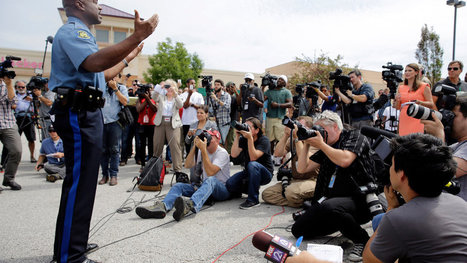
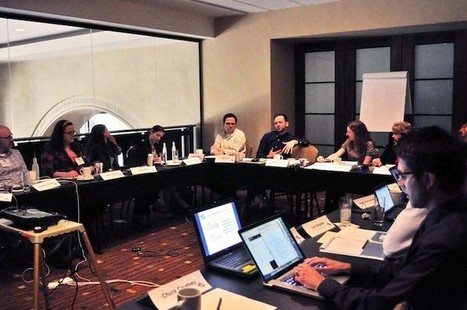






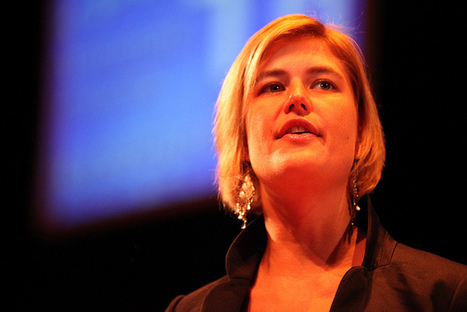





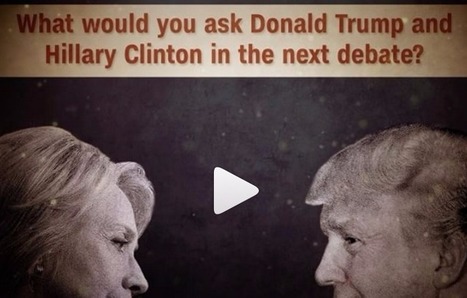
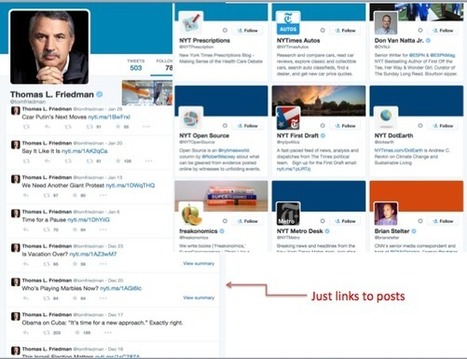


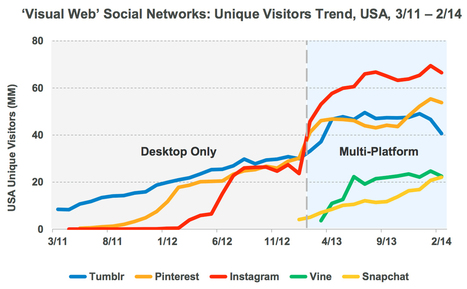
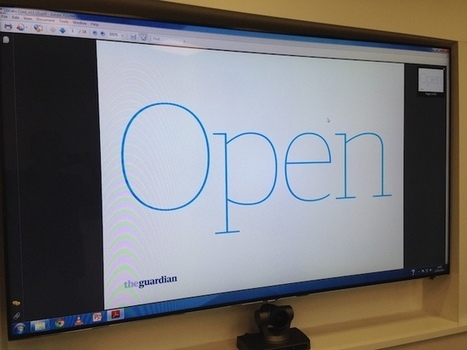



![59% Of Journalists Worldwide Use Twitter, Up From 47% In 2012 [STUDY] | AllTwitter | Public Relations & Social Marketing Insight | Scoop.it](https://img.scoop.it/_IEjy0BuV5YqA9_EGpopbzl72eJkfbmt4t8yenImKBVvK0kTmF0xjctABnaLJIm9)

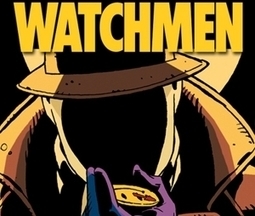






Jeff Jarvis writes a powerful post about the death spiral of Trump and the media.